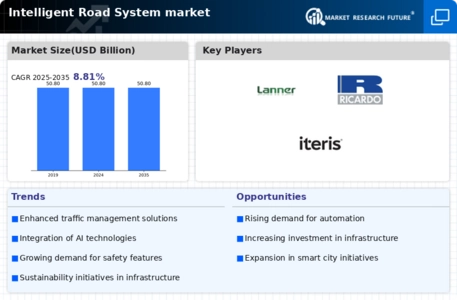Market Analysis
In-depth Analysis of Intelligent Road System Market Industry Landscape
Urban transportation needs for efficiency and sustainability are a major motivator. Intelligent road solutions to manage congestion, air quality, and road safety are in demand as cities grow. Smart technology including sensors, cameras, and communication systems in road infrastructure provide real-time traffic flow monitoring and management, improving efficiency and reducing environmental impact.
Government policies and regulations also affect the IRS market. Many governments worldwide recognize the relevance of smart transportation technologies in meeting sustainability goals and increasing quality of life. As part of their smart city plans, they are developing intelligent road systems. Regulatory regimes that promote innovative transportation technology boost the IRS industry.
Technical advances and linked car use also drive the IRS industry. IoT has enabled seamless connectivity between cars, infrastructure, and central control systems. Connectivity allows intelligent road systems to communicate real-time data and adapt to changing traffic circumstances. As vehicles become more connected and autonomous, demand for sophisticated IRS solutions will surge, spurring industry innovation and competition.
The necessity for improved road safety drives the deployment of intelligent road systems. ADAS and V2X communication technology improve road safety. These technologies can alert drivers of possible risks, improve lane management, and avoid accidents. The IRS market will benefit from rising investments in technology that reduce accident risk and improve road safety as road safety becomes a global priority.
IRS market growth depends on the economy and private sector investments. With more private companies involved, intelligent road system research and development is rising. Companies are seeking new business structures and alliances to capitalize on market possibilities. Intelligent road systems solve urban problems and allow businesses to offer value-added services like traffic management data analytics and infrastructure improvement.
However, high initial installation costs and compatibility concerns may hinder intelligent road system adoption. Some communities struggle to afford innovative technology and infrastructure retrofits. Additionally, maintaining interoperability and easy communication across systems from various suppliers is difficult. Standardization and industry collaboration are needed to overcome these obstacles and make intelligent road systems more prevalent and cost-effective.









Leave a Comment